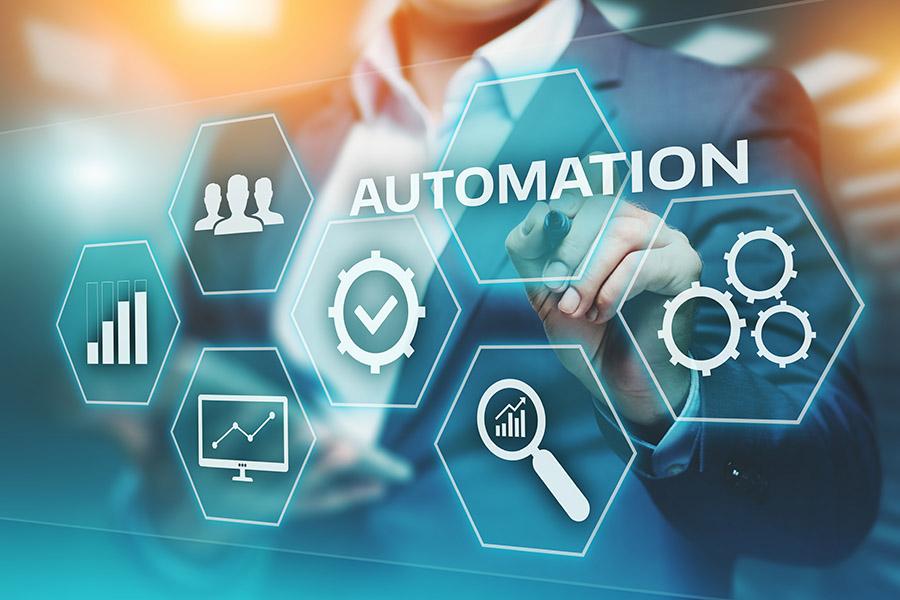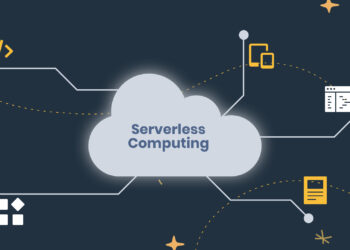In the relentless pursuit of efficiency, accuracy, and scalability, businesses across every industry are experiencing a fundamental paradigm shift: the widespread adoption of automation. What was once confined to large-scale manufacturing lines is now permeating every facet of an organization, from mundane administrative tasks to complex decision-making processes. Automation, at its core, involves the use of technology to perform tasks with minimal or no human intervention. This isn’t merely about replacing human labor; it’s about augmenting human capabilities, freeing up valuable resources for more strategic and creative endeavors, and enabling organizations to operate at unprecedented speeds and levels of precision.
The driving forces behind this transformation are clear: the need to reduce operational costs, enhance customer experiences, improve data accuracy, and achieve competitive advantage in a rapidly evolving global market. This article will delve into the critical factors accelerating the adoption of automation, explore its diverse forms and strategic applications, detail the profound benefits it delivers, address the inherent challenges in its implementation, and project its transformative impact on the future of business operations and the workforce.
The Imperative for Automation in Modern Business
The surge in automation adoption is fueled by several compelling pressures and opportunities facing contemporary businesses.
- Cost Reduction and Efficiency Gains: Manual processes are often slow, prone to errors, and require significant human effort. Automation reduces operational costs by minimizing labor, optimizing resource utilization, and accelerating task completion, leading to substantial efficiency gains across the board.
- Enhanced Accuracy and Reduced Errors: Human error is an inevitable part of manual tasks. Automated systems, when properly configured, can perform repetitive tasks with near-perfect accuracy, significantly reducing rework, waste, and discrepancies in data and processes.
- Scalability and Speed: Businesses need to respond quickly to market changes and fluctuating demand. Automation allows organizations to scale operations up or down rapidly without proportionally increasing human resources, enabling faster processing of data and transactions.
- Improved Customer Experience: Automation can streamline customer-facing processes, leading to faster response times, more consistent service delivery, and personalized interactions. This directly translates to higher customer satisfaction and loyalty.
- Compliance and Auditability: Automated workflows provide clear, auditable trails for every action, making it easier to meet regulatory compliance requirements. They also ensure consistency in adhering to established procedures, reducing the risk of non-compliance.
- Employee Engagement and Talent Retention: By offloading repetitive, tedious tasks to machines, automation frees human employees to focus on more complex, creative, and strategic work. This can lead to increased job satisfaction, better utilization of skills, and improved employee retention.
- Data-Driven Decision Making: Automated systems collect vast amounts of data about processes and performance. This data provides valuable insights that can be leveraged for better strategic planning, continuous improvement, and more informed business decisions.
- Competitive Advantage: Organizations that effectively leverage automation can outperform competitors by delivering products and services faster, at lower costs, and with higher quality, gaining a significant edge in the marketplace.
Diverse Forms and Applications of Automation

Automation is not a monolithic concept; it manifests in various forms, each suited to different operational needs and levels of complexity.
Robotic Process Automation (RPA)
- Definition: Software robots (bots) mimic human actions when interacting with digital systems and software. RPA is best suited for repetitive, rule-based, high-volume tasks that involve structured data.
- Applications: Automating data entry, invoice processing, customer service inquiries (e.g., fetching information from multiple systems), report generation, and employee onboarding tasks.
Intelligent Process Automation (IPA)
- Definition: RPA combined with Artificial Intelligence (AI) capabilities such as machine learning (ML), natural language processing (NLP), and computer vision. IPA can handle more complex, unstructured data and adapt to variations.
- Applications: Automating document processing (e.g., extracting information from handwritten forms), advanced customer service chatbots that understand context, and predictive analytics in operational workflows.
Business Process Automation (BPA)
- Definition: Focuses on automating end-to-end business processes, often spanning multiple departments and systems. BPA solutions orchestrate workflows, integrate systems, and manage data flow.
- Applications: Automating the entire procure-to-pay process, order-to-cash cycles, loan application processing, and comprehensive HR workflows from recruitment to offboarding.
Industrial Automation
- Definition: The use of control systems and technologies (e.g., robotics, programmable logic controllers – PLCs) to automate processes in manufacturing, production, and other industrial settings.
- Applications: Assembly line automation, quality control inspections, material handling, packaging, and process control in chemical plants or power generation.
IT Process Automation (ITPA)
- Definition: Automating tasks and workflows within IT operations, including infrastructure management, incident response, and service delivery.
- Applications: Automated server provisioning, patch management, network configuration, routine system health checks, security incident remediation, and self-service IT support.
Hyperautomation
- Definition: A broader concept that involves automating as many business and IT processes as possible using a combination of technologies, including RPA, AI, ML, BPA, and low-code/no-code platforms. It aims for a “digital twin of the organization” to optimize operations.
- Applications: Creating a comprehensive, interconnected web of automated processes that span the entire enterprise, continuously identifying and automating new opportunities.
Transformative Impact Across Business Functions
Automation’s reach is pervasive, reshaping how various departments and functions operate within an organization.
- Finance and Accounting:
- Automation: Automating invoice processing, expense report reconciliation, financial reporting, payroll processing, and fraud detection.
- Impact: Speeds up closing cycles, reduces errors in financial data, enhances compliance, and frees finance professionals for strategic analysis.
- Human Resources (HR):
- Automation: Automating candidate screening, onboarding new employees, managing employee data, processing leave requests, and generating HR reports.
- Impact: Improves efficiency in HR operations, enhances the employee experience, ensures data accuracy, and allows HR staff to focus on talent development and employee relations.
- Customer Service:
- Automation: Implementing AI-powered chatbots for common inquiries, routing customer requests to the correct department, automating data retrieval for agents, and personalized communication.
- Impact: Provides 24/7 support, reduces response times, improves customer satisfaction, and frees agents to handle more complex or sensitive issues.
- IT Operations:
- Automation: Automating infrastructure provisioning, software deployment, patch management, incident response, security monitoring, and routine system maintenance.
- Impact: Increases IT efficiency, reduces human error in configuration, enhances system uptime, strengthens security posture, and allows IT staff to focus on innovation.
- Supply Chain and Logistics:
- Automation: Automating inventory management, order fulfillment, warehouse operations (e.g., robotic picking), demand forecasting, and logistics planning.
- Impact: Optimizes inventory levels, accelerates order processing, reduces shipping errors, improves supply chain visibility, and lowers operational costs.
- Sales and Marketing:
- Automation: Automating lead nurturing, email campaigns, social media posting, data analysis for targeted advertising, and sales forecasting.
- Impact: Improves lead conversion rates, enhances customer engagement, provides personalized marketing, and allows sales teams to focus on relationship building and closing deals.
- Manufacturing and Production:
- Automation: Robotic assembly, automated quality control, predictive maintenance of machinery, and intelligent scheduling of production lines.
- Impact: Increases production speed and consistency, improves product quality, reduces waste, enhances worker safety, and optimizes resource utilization.
The Multifaceted Benefits of an Automated Enterprise
Beyond departmental impacts, automation delivers overarching strategic advantages for organizations.
- Enhanced Operational Efficiency: Automation directly translates to faster processes, fewer manual errors, and optimized resource allocation. This means more work can be done with the same or fewer resources.
- Significant Cost Savings: Reducing manual labor, minimizing errors, and optimizing resource use directly lowers operational expenses, contributing to a healthier bottom line.
- Improved Accuracy and Quality: Automated systems follow predefined rules consistently, eliminating human error in repetitive tasks. This leads to higher data integrity, better product quality, and fewer reworks.
- Increased Scalability: Businesses can easily scale operations up or down to meet fluctuating demand without significant hiring or downsizing, providing agility and flexibility in dynamic markets.
- Faster Time-to-Market: Automating design, production, and administrative tasks can significantly accelerate the development and delivery of products and services, giving a competitive edge.
- Better Compliance and Governance: Automated workflows ensure consistent adherence to regulatory requirements and internal policies, providing auditable trails and reducing compliance risks.
- Elevated Employee Morale and Productivity: By offloading tedious, repetitive tasks, automation frees employees to engage in more strategic, creative, and fulfilling work, leading to higher job satisfaction and overall productivity.
- Superior Customer Experience: Faster service, personalized interactions, and reduced errors driven by automation lead to higher customer satisfaction, loyalty, and positive brand perception.
- Data-Driven Insights: Automated systems generate vast amounts of operational data. This data, when analyzed, provides actionable insights for continuous improvement, strategic decision-making, and identifying new business opportunities.
- Competitive Differentiation: Organizations that effectively implement automation can achieve levels of efficiency, quality, and responsiveness that set them apart from less automated competitors.
Challenges and Obstacles in Automation Adoption
Despite its immense promise, successful automation implementation is not without its complexities and potential pitfalls.
- Initial Investment and ROI Justification: The upfront cost of automation software, hardware, and integration services can be substantial. Businesses need to carefully calculate and demonstrate the return on investment (ROI) to secure funding and buy-in.
- Fear of Job Displacement / Workforce Resistance: Employees may fear that automation will lead to job losses, creating resistance to adoption. This requires clear communication, reskilling initiatives, and a focus on augmentation rather than replacement.
- Complexity of Integration: Integrating automation solutions with existing legacy systems, diverse software applications, and complex workflows can be challenging. Data silos and incompatible systems often pose significant hurdles.
- Process Identification and Optimization: Not all processes are suitable for automation. Identifying the right processes and thoroughly optimizing them before automation is crucial. Automating a broken process only makes the mess faster.
- Governance and Oversight: Establishing clear governance frameworks, security protocols, and oversight mechanisms for automated processes is critical. Without proper controls, automated errors can proliferate rapidly.
- Security Risks: Automated systems, if not properly secured, can introduce new vulnerabilities. Compromised bots or misconfigured automation tools can provide attackers with elevated access to systems and data.
- Maintenance and Continuous Improvement: Automated systems require ongoing maintenance, monitoring, and updates as business processes or underlying systems change. Automation is a continuous journey, not a one-time project.
- Scalability Challenges (Unexpected): While automation enables scalability, poorly designed or overly rigid automation solutions can themselves become bottlenecks if they cannot adapt to rapidly changing demands.
- Lack of Skilled Talent: There is a growing demand for professionals skilled in designing, implementing, and managing automation solutions (e.g., RPA developers, AI engineers, process automation specialists).
- Over-Automation and Lack of Human Touch: Automating too many customer-facing processes can sometimes lead to a depersonalized experience, frustrating customers who prefer human interaction for complex or sensitive issues. Balancing automation with human empathy is key.
Hyperautomation and Human-Machine Collaboration

The trajectory of automation suggests a future where it is not just a tool but an embedded philosophy, driving hyper-efficiency and symbiotic human-machine collaboration.
- Hyperautomation as the New Normal: Organizations will increasingly pursue hyperautomation, leveraging a combination of RPA, AI, ML, process mining, and low-code/no-code platforms to automate an ever-wider array of processes across the enterprise.
- AI-Driven Decision Automation: Beyond automating tasks, AI will enable the automation of more complex decisions, with systems learning from data to make informed choices in areas like supply chain optimization, fraud detection, and personalized marketing.
- Increased Human-Machine Collaboration: The future workforce will be characterized by a synergistic relationship between humans and intelligent machines. Humans will focus on creativity, critical thinking, problem-solving, and emotional intelligence, while machines handle repetitive and data-intensive tasks.
- Process Mining and Discovery: Advanced analytics and process mining tools will become standard for automatically discovering, mapping, and identifying automation opportunities within existing workflows, moving beyond manual process analysis.
- Democratization of Automation: Low-code and no-code platforms will make automation more accessible to business users, allowing them to build and deploy simple automation solutions without deep programming expertise, fostering a citizen developer movement.
- Automation-as-a-Service (AaaS): More vendors will offer automation solutions as a service, reducing upfront costs and management overhead for businesses, similar to the evolution of cloud computing.
- Ethical AI and Trustworthy Automation: Growing emphasis will be placed on developing ethical AI and transparent automation systems, addressing concerns around bias, accountability, and the societal impact of automation.
- Resilient and Adaptive Automation: Future automation systems will be designed to be more resilient to disruptions and adaptive to changing business rules and external conditions, ensuring continuous operation.
- Digital Twins of Organizations (DTOs): Creating virtual models of an organization’s processes, people, and systems to simulate scenarios, optimize operations, and identify new automation opportunities in a risk-free environment.
Conclusion
Automation is no longer a luxury for a select few; it is a strategic imperative for every organization striving for operational excellence, competitive advantage, and sustainable growth. From streamlining back-office functions with RPA to empowering intelligent decision-making with AI, automation is fundamentally reshaping the landscape of business operations. While the journey involves navigating challenges such as initial investment, workforce adaptation, and integration complexities, the profound benefits—including enhanced efficiency, significant cost savings, superior accuracy, and an elevated customer experience—are undeniable.
The future of work is not one where humans are replaced by machines, but one where human potential is augmented and amplified by intelligent automation. By embracing this transformative force, businesses can free their greatest asset—their people—to innovate, create, and focus on the uniquely human aspects of their work, ultimately powering a more agile, productive, and prosperous digital future. The era of the automated enterprise is here, and its march is irreversible.















